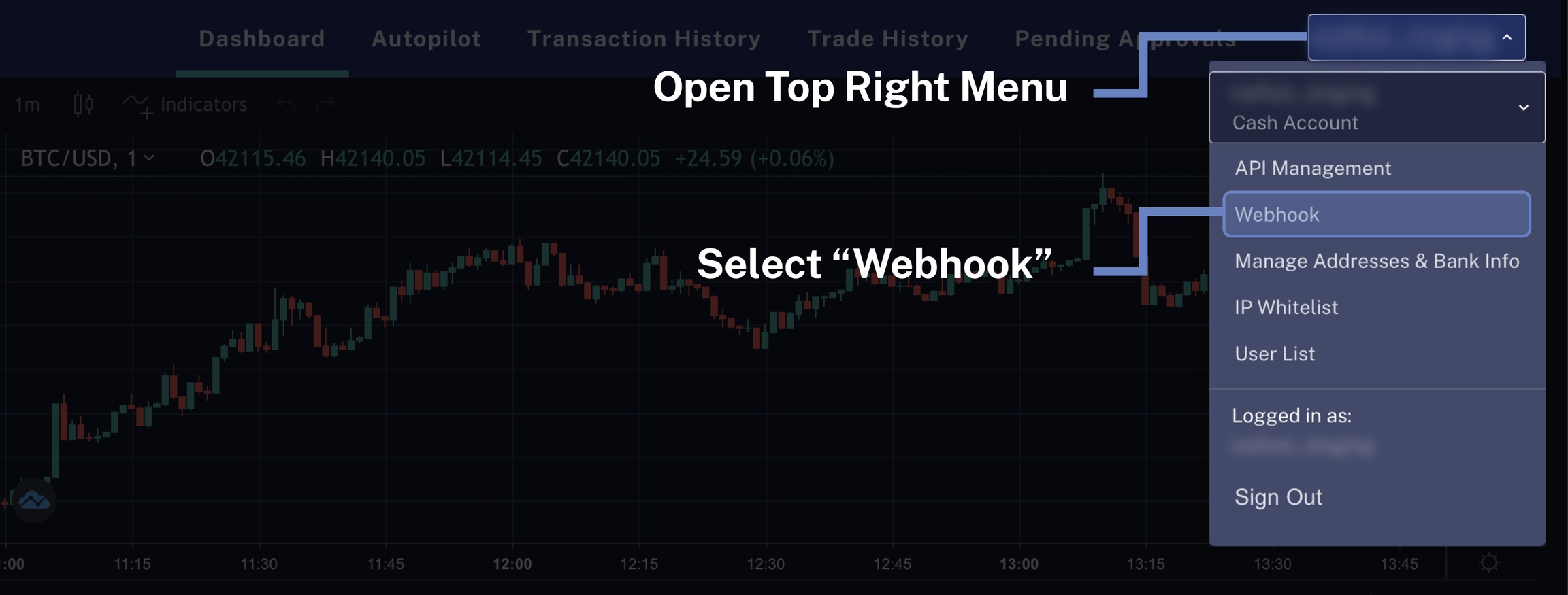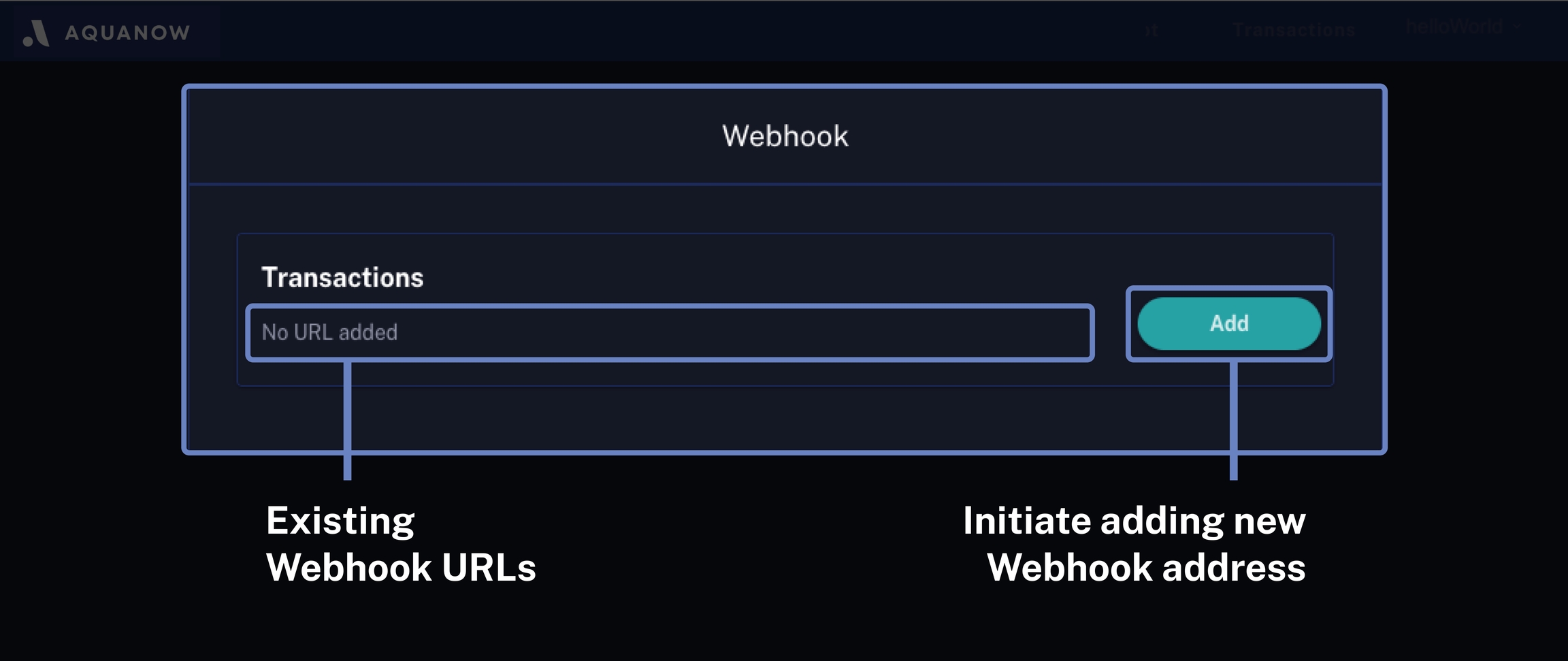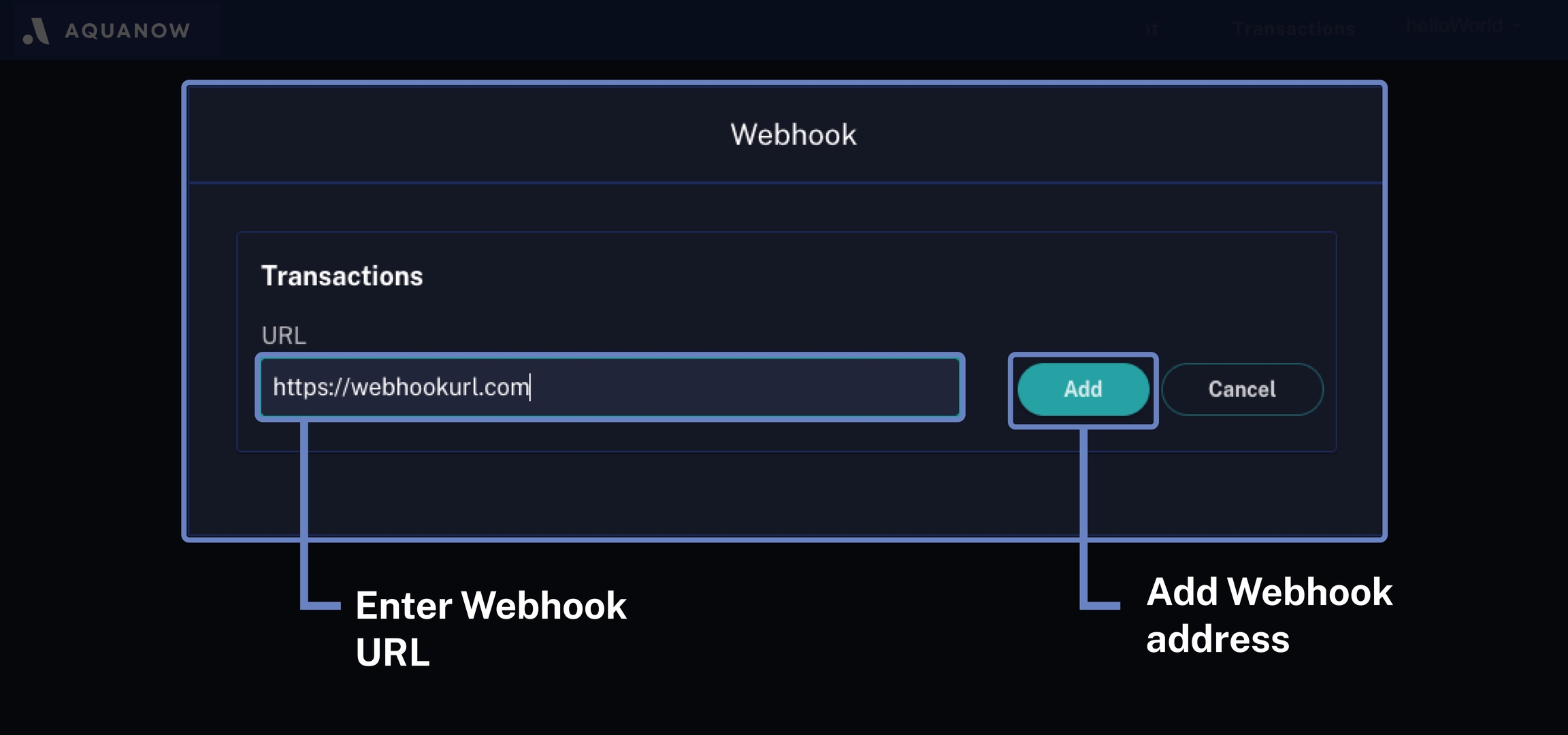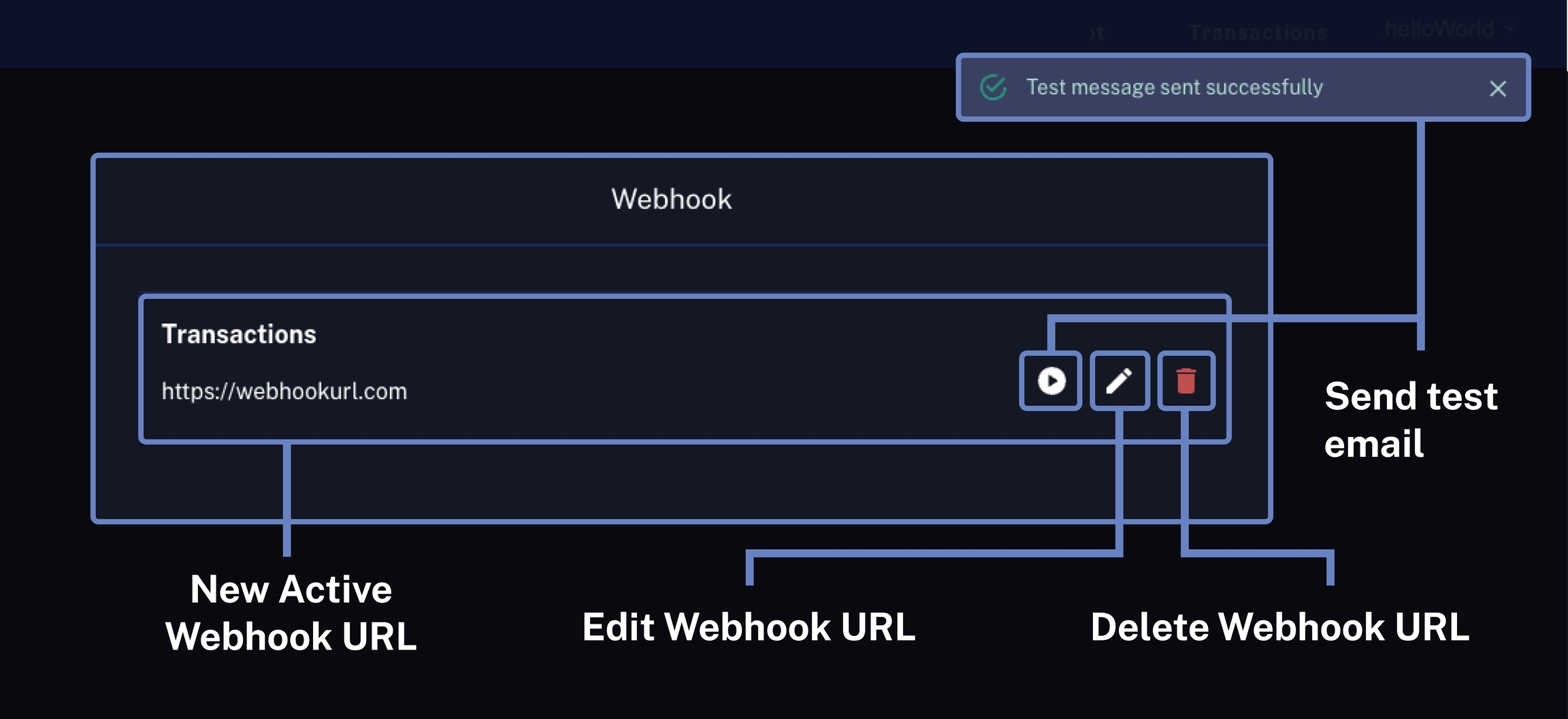Subscribing to Webhooks
Webhook callbacks for clients that want event-driven updates
Aquanow offers Webhook callbacks for clients that want to be updated when a transaction is detected on-chain or finalized. Currently we support Webhooks for transactions (deposits and withdraw).
Adding Webhook URLs
Select “Webhook” from the top right dropdown menu.

Select "Add" to add a Webhook for Transactions.

To add a Webhook, enter the Webhook URL and select "Add".

Once the Webhook is added, several actions become available: Users can send a test message, edit or delete the Webhook.

Sending a test message allows users to test if messages can be sent properly. If the Webhook works correctly, a success notification will appear.